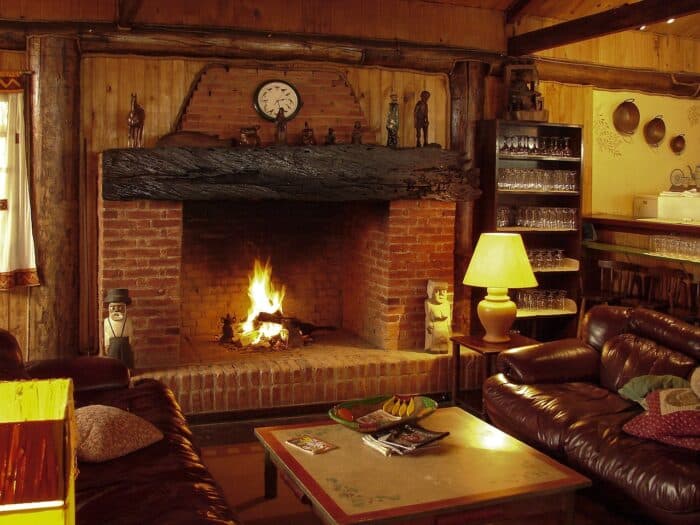Keep your Home and Family Safe
As summer rapidly comes to a close, homeowners with fireplaces begin looking forward to long nights curled up in front of the fire with a hot drink and a good read. Before throwing the first log of the season in and lighting it up, there are a number of preventative maintenance tasks that need to be completed to keep your home and family safe all winter long, whether your fireplace is wood-burning or has a gas insert.
Number of Preventative Maintenance
- Inspect and Clean the Chimney- When up on your roof checking your gutters for the fall, make sure you inspect your chimney for signs of damage such as cracks or loose bricks. Ensure the chimney cap is securely attached and free from debris such as leaves or bird nests. Hire a professional chimney sweep to remove creosote buildup, which can lead to dangerous chimney fires.
- Check for Drafts- Drafts in fireplaces can occur when the damper is the wrong size or does not open and close correctly when the fireplace is not in use. If you feel cold drafts, consider installing a chimney balloon or damper clamp to prevent heat loss when the fireplace is not in use.
- Clean the Firebox- If you didn’t clean your fireplace out after your last fire last season, remove all ashes and soot from the firebox using a fireplace shovel and brush. Dispose of the ashes in a metal container, as they can remain hot for hours and pose a fire hazard. Clean the interior walls of the firebox to remove any residue. On a gas fireplace, inspect each log or piece for cracks, holes, or excessive burn marks. Use a paintbrush or soft-bristled toothbrush to dust away debris from the burner unit and inspect each vent hole for any build-up that could clog the flow of gas. Never use water.
- Inspect the Fireplace Grate and Hearth- Clean the fireplace grate is clean of excessive residue using diluted vinegar. Make sure the grate is in good shape. Cast-iron grates are more durable than steel grates. Using a grate allows air to flow better around the fire and keeps the concrete floor of the fireplace from getting cracked and eventually weakening. It is also important to make sure the grate is still appropriate for the type of fuel source you are planning to use. Mesh baskets are best for coal and grates are better for wood. Cracks in the hearth can allow fire to spread to the rest of the room.
- Inspect the Flue- The flue is a pipe made of terra cotta clay or stainless steel that the gas or smoke exits the home through the chimney. Make sure any crumbling or rust is repaired before using the fireplace.
- Clean the Glass Doors or Screen- If you have a gas fireplace, the glass doors need to be cleaned to remove any residue using an alcohol-based fireplace cleaner. Use a wire brush to remove creosote.
- Stock up on firewood- Purchase as much seasoned firewood as you have room for at the beginning of the season, so you do not run out during the coldest months. Seasoned firewood produces less creosote and burns more efficiently than unseasoned wood or paper. Store it in a dry, covered area to keep it from absorbing moisture.
- Test Smoke and Carbon Monoxide (CO) Detectors- Many insurance companies require working smoke and carbon monoxide detectors and Illinois now requires hard-wired smoke detectors or ones with a 10-year battery. Gas fireplaces are CO hazards if there is a leak or the ventilation fails.
- Create a Cozy Fireplace Nook- Make sure furniture, pet beds, pillows, etc. are placed no closer than 3 feet away from the fireplace. Even if there is a screen, embers can fly and catch flammable materials on fire. Decorations on the mantle should not hang off the edge.
- Practice Safe Fire Building- Only allow adults to start a fire. Supervise children and pets when a fire is burning. Use the right kindling and firestarter for the material you are burning and do not overload the firebox. Make sure the damper is fully open before lighting the fire and always use a fireplace screen to contain sparks and embers.
- Maintain Regular Cleaning- If cleaning the fireplace each time you use it is too much, it needs to be cleaned monthly, whether it is wood burning or gas, to maintain efficient airflow.
- Schedule Annual Inspections- This should be done by a licensed, insured, and bonded chimney sweep.
Stay warm and safe!
Now that your fireplace is ready, grab a cup of hot chocolate, a book, and your favorite blanket, and enjoy!





